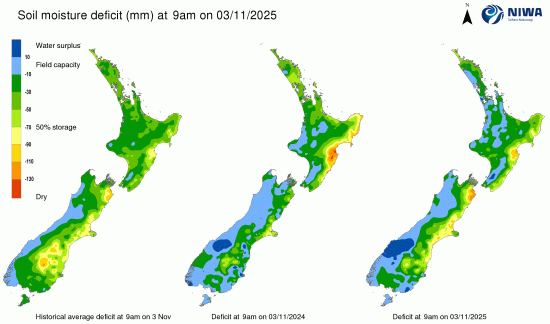Here's our summary of key economic events overnight that affect New Zealand, with news markets are maintaining a wilful blindness in the face of the arrival of some major threats and poor data.
Firstly we should note that the US Federal Government is shutting down having reached its debt limit, and in the absence of a compromise reached between Congress (the Senate in this case) and White House. There is no sign that this issue will be resolved soon. The President is using the event to blame everyone else but himself - and the truth is he probably doesn't care what damage he is doing; he's likely relishing it.
But it will likely have significant financial market impacts, although today Wall Street is acting like it will be resolved quickly as usual, holding their breath.
However, this shutdown could delay the September jobs report due at the weekend. Some are even saying the shutdown could stretch all the way to the Fed’s next meeting on October 29. (The US Supreme Court has knocked back Trump's attempt to oust Fed Governor Cook, at least until the new year.) Gold posted another all-time high and is on track for an annual rise +50%, while the US dollar is under pressure.
Meanwhile, data out overnight shows there was a huge drop in US mortgage applications last week, the largest in nearly a year. Refinance activity dropped the most, but finance for new home purchases dropped notably too. Benchmark mortgage interest rates didn't move much, up just +12 bps and still on a declining trend.
News on their labour market front wasn't good for September either. In advance of this weekend's non-farm payrolls report, the ADP Employment Report was expected to reveal a low +50,000 jobs gain. But in fact it came in with a -32,000 jobs loss for the month. It isn't clear yet whether the non-farm payrolls report will be released given the shutdown. The ADP version may be all the markets get on how the giant US labour market is tracking.
And it really isn't any better on the factory floor. The latest ISM factory PMI for September is still in contraction (49.1) with the new order component retreating from August. (But the S&P Global factory PMI which we reported last week is a bit more upbeat. Even so it reports slowing demand.)
All this will depress American economic growth. But it may also raise inflation. The frequent shocks to global supply chains from factors such as the American tariffs leave central banks with limited tools to combat rising risks of inflation, according to the Governor of the Canadian central bank in a recent interview.
Canada's factories are slowing too.
Across the Pacific, similar factory PMIs show Japan contracting, Korea moving back into expansion on strong new orders, Taiwan going backwards, and Indonesia in a minor expansion again on the back of better new orders.
So it won't be a surprise to lean that September exports from Korea rose sharply to their best level since mid 2024.
In China, their Golden Week national holiday is underway, starting an enormous surge in travel by vacationers. International markets will notice the surge.
In Australia, Cotality is reporting a surge in house prices driven by a worrying combination of low new supply, very low listing levels, and new low-deposit arrangements bringing in more demand. House prices jumped in all capital cities in September, led by Perth and Brisbane, but the most notable change is the rise in Sydney.
The UST 10yr yield is still at 4.11%, down -3 bps from yesterday. The key 2-10 yield curve is now up at +56 bps. Their 1-5 curve is positive by +7 bps. And their 3 mth-10yr curve is now +7 bps positive. The China 10 year bond rate is up +2 bps at 1.88%. The Australian 10 year bond yield starts today at 4.35%, up +3 bps from yesterday. The NZ Government 10 year bond rate starts today at just over 4.24%, up +3 bps from yesterday.
Wall Street is little-changed in Wednesday trade, with the S&P500 level-pegging (+0.1%). Overnight, European markets rose about +1.0%. Tokyo ended its Wednesday session down -0.8%. However Hong Kong and Shanghai were closed for their Golden Week holiday. Singapore rose +0.5%. The ASX200 ended its Wednesday little-changed while the NZX50 managed another strong +1.1% gain and again, the best of the markets we follow.
The price of gold will start today at US$3870/oz, up +US$23 from yesterday and a new all-time high. Silver is back up to US$47.50/oz.
American oil prices are down another -50 USc at just under US$62/bbl, with the international Brent price now just under US$65.50/bbl and down -US$1.
The Kiwi dollar is at just on 58.1 USc and up +10 bps from yesterday. Against the Aussie however we are up +40 bps at 88 AUc. Against the euro we are up +20 bps at 49.6 euro cents. That all means our TWI-5 starts today at just on 65.3, and also up +20 bps.
The bitcoin price starts today at US$117,765 and up +4.3% from yesterday. Volatility over the past 24 hours has been moderate at just on +/- 2.3%.
Daily exchange rates
Select chart tabs
The easiest place to stay up with event risk is by following our Economic Calendar here ».
8 Comments
After the takeover offer for Restaurant Brands yesterday, today it's Bremworth's time - likely to be bought out by Mohawk Flooring from the US.
Overseas investors seeing value in our run-down share market and economy.
New Zealanders don't understand that the ultimate benefit always flows to the owners. Innovation, AI and all the buzzwords just don't cut it. Ownership does.
They do, but only when it comes to owning houses. Businesses are altogether too complicated for the average NZ investor. Got to hope that someone else does the work of making society richer and more productive so that benefit flows into your asset prices.
Doctors are actually not leaving New Zealand in any great numbers. A common myth is destroyed by data.
https://www.odt.co.nz/news/dunedin/campus/nz-trained-doctors-flying-coop-%E2%80%98-myth%E2%80%99
That's interesting, surprisingly high number staying in NZ. My medical specialty loses about a third of our trainees overseas very soon after qualification - mostly to Australia where a starting position pays more than a team leader here in NZ.
Are you sure? Given the data based info above shows that across specialities it's not happening.
That said, a bit of inflow/outflow lifts quality
Should have clarified, I'm not a doctor so we're not in that data. We've done our own surveys.
A common pipeline for us is UK qualified staff arriving to train New Zealanders, so they can work in Australia.
(Bloomberg) — Oil is forecast to drop into the $50s-a-barrel range in the coming quarters on expectations for “punishing oversupply” as output expands, according to Macquarie Group, which pared back price outlooks.
“We remain fundamentally bearish the energy complex,” analysts including Marcus Garvey said in a quarterly outlook for a broad range of raw materials.



We welcome your comments below. If you are not already registered, please register to comment.
Remember we welcome robust, respectful and insightful debate. We don't welcome abusive or defamatory comments and will de-register those repeatedly making such comments. Our current comment policy is here.